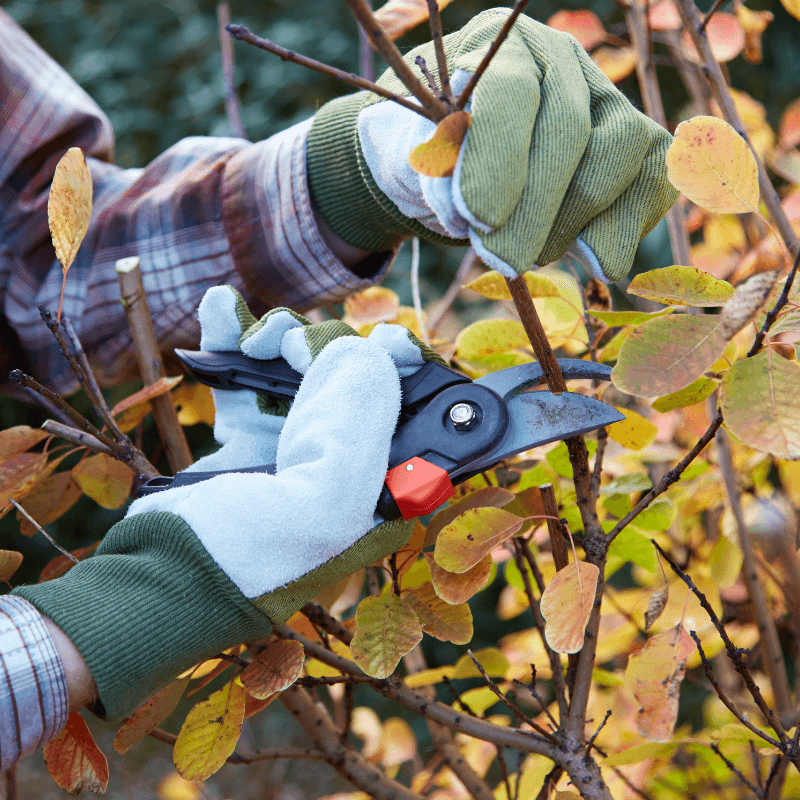How to Prune Your Plants This Autumn
Autumn is upon us, and it’s the perfect time to give your precious plants some pruning.
Seasoned green thumbs will know that giving your plants a chop in autumn can stimulate growth, enhance plant health, and keep your garden tidy. So, grab your secateurs, and let’s get pruning!
Why is Pruning Important?
Autumn pruning is important for a few reasons, but it mostly comes down to aesthetics and vitality. Pruning in autumn gives you a good chance to redirect unruly branches (for a uniform look) while your plant is almost dormant. On the flip side, if you prune your plants in spring or summer, you might interrupt new growth and cause significant long-term harm. In terms of vitality, autumn pruning protects the health of your plants by removing dead and diseased branches, which can lead to pest infestations if left unchecked—yikes!
Gather Your Tools
Before you start snipping away, make sure you have the right tools on hand. You’ll need a pair of sharp pruning shears for smaller branches and twigs, loppers for anything thicker, and a pruning saw for large branches. Make sure your tools are clean and sharp to make uniform cuts that heal quickly and prevent disease. It’s also a good idea to pop on some protective equipment before you start—think thick leather gardening gloves (no splinters, thanks!) and some solid, clear safety glasses at a bare minimum.
Pruning Techniques
For trees and shrubs that lose their leaves in winter, it’s best to prune when you can see the trunk/stem structure clearly without the leaves. First, remove any dead, damaged, or diseased branches. Then, look for branches that are crossing or rubbing together and remove the weaker ones to prevent damage. Trim back to a main stem or a bud that faces the direction you want the branch to grow next year.
For perennials and flowers, get pruning as soon as the first frost has occurred. Pests and diseases will love the dead leaves and stems, so trim them as far back as possible to avoid creating a plague of unwanted baddies in your garden.
For roses, give them a light prune in preparation for winter. Remove any dead or diseased wood and any spindly branches. Cut back to just above a bud that faces outward to encourage an open shape that allows light and air into the centre of the plant.
Bonus Tips
Once you’ve finished pruning, consider applying a layer of mulch around your plants. This helps retain moisture, suppresses weeds, provides nutrients, and helps protect against fluctuating temperatures. As the mulch breaks down, it also enriches the soil, further benefiting your plants.
Could you use some help pruning your plants this autumn? Here at Simply Helping, we offer flexible, quality gardening and lawn mowing services as part of our in home care! Click here to learn more and contact us today.





